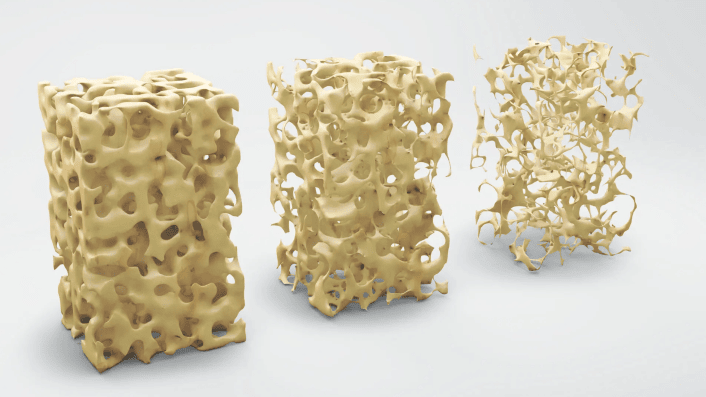AI system detects osteoporosis from routine X-rays
Researchers have developed an artificial intelligence system that can estimate bone mineral density and detect osteoporosis from standard lumbar X-ray images, achieving sensitivity rates of 86.4% for osteopenia detection. The technology could transform routine clinical X-rays into powerful screening tools for bone health assessment.
A groundbreaking artificial intelligence-assisted diagnostic system has demonstrated the ability to estimate bone mineral density (BMD) in both the lumbar spine and femur using only anteroposterior lumbar X-ray images, potentially revolutionising osteoporosis screening in areas with limited access to specialised diagnostic equipment.
The research, published in the Journal of Orthopaedic Research on 9 July 2025, analysed 1,454 X-ray images from participants in a population-based cohort study and achieved impressive performance metrics for detecting bone density loss.
High accuracy rates for osteoporosis detection
The AI system demonstrated strong diagnostic capabilities, with mean absolute errors of 0.076 g/cm² for lumbar BMD estimation and 0.071 g/cm² for femoral BMD estimation when compared to dual-energy X-ray absorptiometry (DXA) measurements, the current gold standard for bone density assessment.
For osteopenia detection, the system achieved sensitivity rates of 86.4% for the lumbar spine and 84.1% for the femur, with corresponding specificity rates of 80.4% and 76.3% respectively. The technology also demonstrated high sensitivity and specificity for categorising patients with and without osteoporosis.
“Bone mineral density measurement is essential for screening and diagnosing osteoporosis, but limited access to diagnostic equipment means that millions of people worldwide may remain undiagnosed,” said corresponding author Dr Toru Moro from the University of Tokyo. “This AI system has the potential to transform routine clinical X-rays into a powerful tool for opportunistic screening, enabling earlier, broader, and more efficient detection of osteoporosis.”
Revolutionary approach to bone health screening
The artificial neural network consisted of two main components: a segmentation network for detecting the spinal area and a deep neural network for estimating BMD values from X-ray images. Importantly, the system could estimate femoral BMD despite the femur not being visible in the lumbar spine X-rays, suggesting the AI identified subtle patterns and relationships in the visible anatomy that correlate with bone density at distant sites.
The research team found that performance rates varied across different patient groups. Male participants showed larger mean absolute errors than female participants, though this was attributed to higher baseline BMD values in men rather than reduced AI accuracy. The system maintained consistent performance across different body mass index categories.
Clinical implications and limitations
The study revealed important insights about factors affecting AI performance. Analysis of attention heat maps showed that the system focused primarily on the L1-L4 vertebral regions for lumbar BMD estimation, whilst femoral BMD estimation utilised information from the thoracic spine, lumbar spine, and pelvis.
The authors noted that spinal degenerative changes affected lumbar BMD estimation accuracy but had minimal impact on femoral BMD predictions. “A significant monotonic increase in estimation error was observed in lumbar spine BMD as the severity of lumbar spondylosis increased, whereas no such trend was found in femoral BMD estimation,” the researchers reported.
Several limitations were acknowledged, including the use of only two types of imaging equipment and the potential for class imbalance affecting minority case detection. The system showed reduced performance for osteoporosis classification in male participants, likely due to the lower prevalence of osteoporosis in men within the population-based study cohort.
Addressing global healthcare challenges
The technology addresses a critical global health challenge, as approximately 619 million patients undergo X-ray examinations during orthopaedic services annually, whilst DXA equipment remains less widely available. This disparity creates opportunities for missed diagnoses in regions with limited access to specialised bone density scanning equipment.
The researchers emphasised the system’s potential for population-level screening: “The system was able to estimate the bone mineral density and classify the osteoporosis category of not only patients in clinics or hospitals but also of general inhabitants.”
Future development priorities
The development team plans to enhance the system through improved data balance using oversampling techniques and cost-sensitive learning strategies to better detect minority cases. External validation using diverse institutional datasets will be essential for confirming the technology’s broader applicability and robustness.
Reference
Moro, T., Yoshimura, N., Saito, T., et. al. (2025). Development of artificial intelligence-assisted lumbar and femoral BMD estimation system using anteroposterior lumbar X-ray images. Journal of Orthopaedic Research, 1-13. https://doi.org/10.1002/jor.70000


